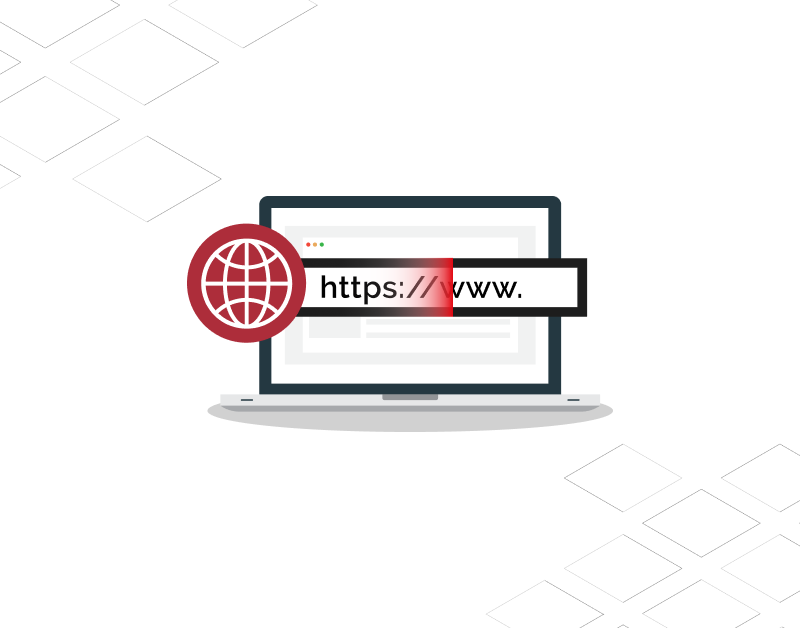Regular network monitoring is essential for any organization. It ensures better business performance and provides optimal user experience. Your network’s unhindered and smooth performance is crucial so your team members, business partners, and customers will continue to have a seamless experience while using your systems. In this blog we explore active and passive monitoring, what’s the difference, and why it matters.
Why you need to perform regular network monitoring
Network and brand monitoring should be part of any enterprise’s best practices. Aside from ensuring optimal network performance, regular monitoring is crucial for managing your business’s reputation. In addition, it allows you to maintain external connections, especially with your customers.
With monitoring systems in place, you can ensure customers continue to access your portals, resources, services, and other valuable assets. This practice also reduces downtime and protects your clients from cyber threats. In addition, it lets you pinpoint problems with your network’s performance and identify where you can improve process flows and essential resources.
Using network and brand monitoring, your tech team can quickly identify failing network nodes and hardware components. Further, you can fix broken links promptly before they can cause any significant degradation in network efficiency.
Two types of network monitoring
Network monitoring tools and systems can be categorized into two categories:
- Active network monitoring
- Passive network monitoring
What is active monitoring?
Active network monitoring is also referred to as synthetic monitoring and takes on a more predictive and proactive approach. It’s called ‘synthetic’ because this approach doesn’t use actual user data. Instead, the tools used in this type of monitoring aim to predict the potential performance of your network using simulations of current network behavior. The simulations are generated across all end-to-end systems and hardware.
Active brand monitoring aims to obtain a complete real-time view of your network’s performance. This method allows your team to proactively identify potential problem points and issues your network may experience, thus enabling you to prevent network issues.
In addition, active analysis allows you to measure network performance using different metrics and key performance indicators. You can use active monitoring to measure latency, HTTP response times, jitter, and packet loss.
Since an active monitor will produce results based on predictive data, it may not always report accurate results since it uses simulations instead of actual user data. Another downside of this approach is that it takes a toll on your network resources because it produces real-time data continuously.
What is passive monitoring?
On the other hand, passive network monitoring involves passive analysis and is based on actual data from your network users. Where active monitoring constantly produces regular albeit smaller amounts of data, passive monitoring uses real and holistic data, as well as larger data volumes, and gives you a clearer insight regarding the status of your network.
You can use passive monitors to analyze user traffic and network utility trends. With this approach, you can pull information on specific network connections and examine them individually. You can also pool your data sets according to particular periods, which allows you to analyze network trends and adjust your resources accordingly.
Passive network and brand monitoring tools generate large amounts of data regarding your network performance. Even though it does this, it doesn’t significantly impact your business resources because passive monitors don’t need to run as often as their active counterparts. These tools can identify network elements that consume more available bandwidth.
Active vs. passive monitoring
There are several essential points that you can use to compare these two monitoring techniques. These include the required network resources, data analysis, collected data, network traffic measurements and applications. These details will help you understand the difference between active vs. passive monitoring.
- Amount of data collected
As mentioned earlier, active monitors produce smaller data amounts. This is because the tools used in this method are geared toward solving specific network issues. Therefore, each data set it generates will be used exclusively for the problem it was intended to solve.
On the other hand, passive monitoring tools use large volumes of historical data to give you an accurate picture of your network’s performance. This approach is better suited for solving multiple issues rather than specific problems.
- Measuring network traffic
Active monitors can measure both internal and external network traffic. On the other hand, passive networks are designed only to measure traffic within your network environment.
- Applications
Active monitor tools can be used to track and monitor network efficiency. You can use them to check the performance and ensure everything in the system is running optimally. This method ensures that users won’t experience issues affecting their productivity.
In contrast, passive monitoring tools help you identify the elements in your network that consume more bandwidth. You can then adjust resource allocation to accommodate different demands across your network.
- The volume of collected data
As explained earlier, active monitors continuously produce small amounts of data to resolve specific network problems. On the other hand, passive monitors generate large quantities of data offering insight into actual network user issues you need to address.
- Data analysis
The data generated by active monitoring tools are best suited for analyzing and predicting network performance. In contrast, passive monitors are used to measure and report network performance by measuring and analyzing historical traffic data.
- Required resources
Active monitors insert test traffic data into your current network to generate simulations and predictive data for analysis. The test data allows testing tools to measure network performance and identify bottlenecks in the overall structure. The downside to this approach is that monitoring will require more network resources.
Passive monitors capture, store, and analyze data to identify network usage trends. There’s no need for additional data to be injected into the current network to test its current capabilities. This approach doesn’t require a lot of network resources to produce the necessary data, thus reducing overhead costs and the need for more networking hardware.
Active monitors are best-suited for analyzing specific metrics such as latency and jitter. It’s also helpful when monitoring and policing service-level agreements (SLA). In other words, it allows you to check if users comply with your system’s service standards.
Pros and cons of active monitoring
Pros of active monitoring
- Allows you to see potential problems before it affects network users.
- Provides real-time network visibility.
- Simulates possible user behaviors.
- Enables your team to predict and troubleshoot potential issues.
Cons of active monitoring
- Resource-intensive approach.
- Data isn’t always accurate.
Pros and cons of passive monitoring
Passive monitors give you an in-depth view of the quality of users’ experience. You can use it to check signaling protocols, packet transmissions, available bandwidth, and application usage. It helps evaluate post-incident scenarios and create resolutions to current network issues. Use it to resolve problems that have a direct impact on your end-users.
Here are the pros and cons of using passive monitors:
Pros of passive monitoring
- Uses actual user data.
- It doesn’t require the use of other networks or external traffic.
- Data is pulled from specific network points.
- Provides you with a holistic view of total network performance.
- You can use it to focus on and measure particular metrics.
- Uses more significant amounts of network performance data, which makes it more accurate.
Cons of passive monitoring
- You need to keep your passive monitors fully updated.
- This approach will require specialized hardware to thoroughly analyze user experiences on specific devices.
- Any issue that you discover through this approach must be addressed right away.
Use cases for active monitoring
Since active monitors use end-to-end simulations and a predictive approach, here are some of their potential uses:
- Select alternate servers for specific apps and services.
- Checking the range of affected areas and troubleshooting services impacted by network issues.
- Improve network performance using simulations to check the current quality of provided services.
Use cases for passive monitoring
Since passive monitors use actual user data, they’re best suited for the following:
- Design custom services personalized for each customer based on their recorded usage preferences.
- Improve the quality of user experience via the analysis of client usage patterns.
- Troubleshooting and identifying the root cause of service interruptions, network downtimes and other significant incidents.
Which type of monitoring should you use?
Using active monitors takes a predictive and proactive approach, which means it’s best for improving the quality of service (QoS). On the other hand, passive monitors are based on user data and provide plenty of valuable metrics. This means it is best to use it to improve the quality of the experience (QoE).
Since passive and active monitors focus on several different network performance factors, businesses should use them both. Furthermore, if your goal is to improve the quality of your service and user experience, you need to use these two monitoring approaches seamlessly.
The performance of your network is crucial to providing the best service for your end-users and customers. Being one step ahead of potential issues and resolving current network problems quickly and efficiently allows you to delight customers, nurture client relationships, and grow your business.
Work with network, email security, and brand protection specialists
If you’re looking to improve the quality of your network and use monitoring tools effectively, as well as protect your organization from phishing, brand and domain impersonation, and more, Red Sift can help.
Red Sift Brand Trust is a brand protection solution that discovers and shuts down lookalike domains before they can be weaponized for phishing attacks.







